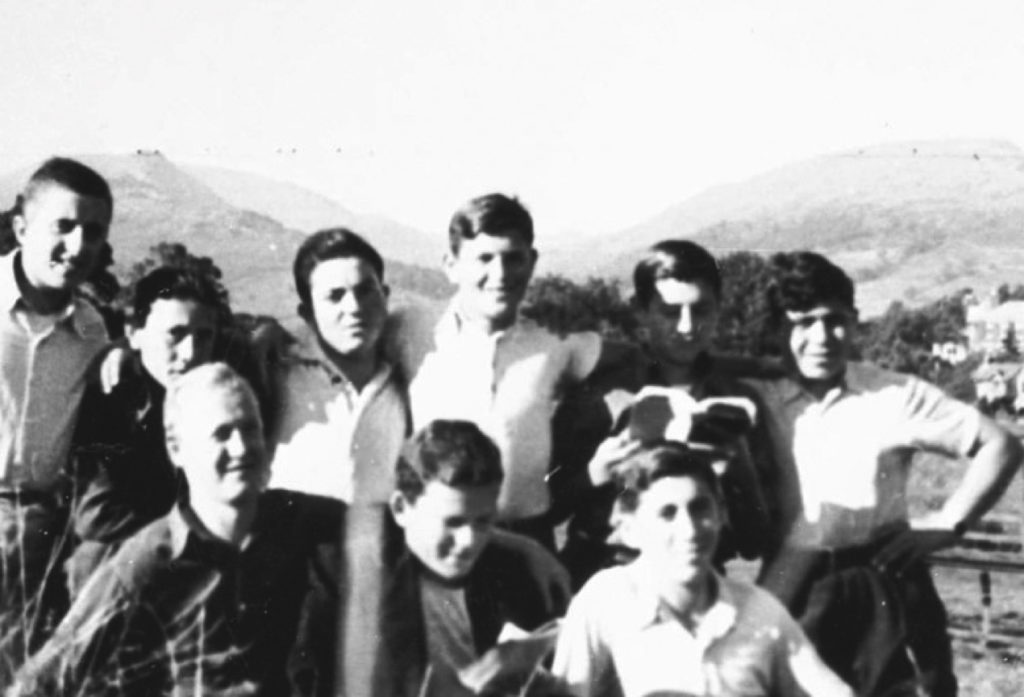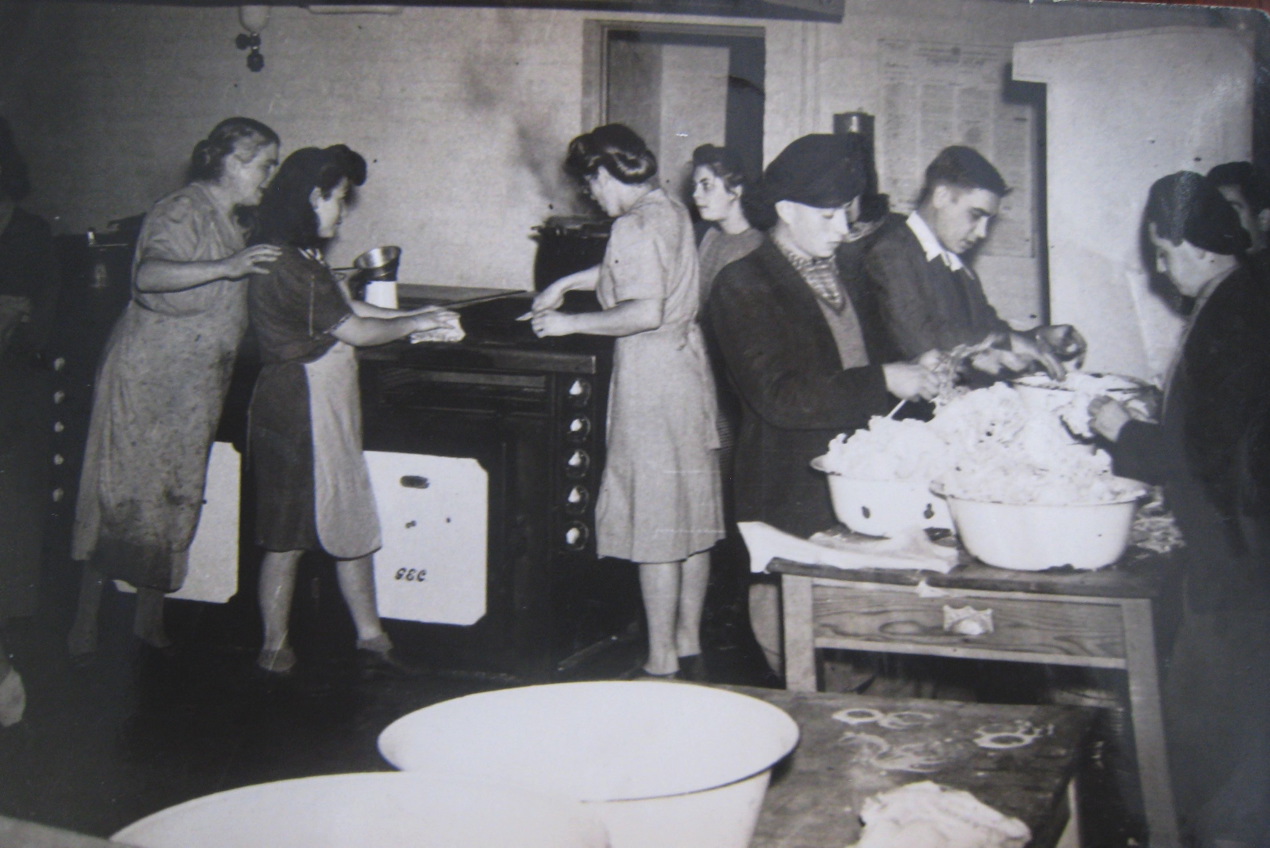Healing in the hills
We might question some of the methods social workers and psychologists used to treat child survivors of the Holocaust but their efforts were remarkable, according to historian Rebecca Clifford
On 15 August 1945, 300 refugee children stepped out of planes and onto the tarmac at Crosby-on-Eden airfield – now known as Carlisle Lake District Airport.
Some did not know their names or have any knowledge of their lives before the war
Just four months earlier, the orphaned Jewish children had been discovered in or near the liberated ghetto camp of Theresienstadt in Czechoslovakia. Traumatised and malnourished, the child Holocaust survivors presented a unique challenge to authorities and aid workers.
How could psychologists and social workers begin to rehabilitate children who had witnessed and experienced the unimaginable? Could the children simply forget and move on? What kind of lives would they go on to lead? Where would they go?
Historian Rebecca Clifford’s new book Survivors uncovers the post-war lives of the youngest survivors of the Holocaust. A group largely neglected by scholars, it
focuses on those born between 1935-1944.
An estimated 90 per cent of Europe’s Jewish children were murdered in the Holocaust. But the roughly 150,000 children under the age of 18 who survived had lived through periods in hiding, in ghettos, in forced labour and concentration camps. Many were orphans at the war’s end. Some did not know their own names or have any knowledge or memories of their lives before the war.
Post-war efforts to help these children – alongside the estimated 13 million other European children who lost parents in the war – constituted one of the largest humanitarian aid projects in history. The scheme at Windermere, a temporary reception centre to rehabilitate up to 700 children, was just one of many across Europe.
Child psychologists and social workers practised radical new methods to help the children move on from their experiences. But as Clifford writes, their efforts were not always helpful. Eugene Minkowski, a psychiatrist examining male child survivors in Écouis in northern France, noted that the children appeared as a “homogenous mass, with no hair, faces swollen from hunger and uniform clothes”. Minkowski recorded that the group had an “apathetic, unconcerned and indifferent attitude, with no laughter or even a smile”.
In fact, the director at the Écouis reception centre was terrified of the children he was charged with, arguing that they were psychopaths, and probably always had been. This lack of understanding and the general mistrust of those who had been imprisoned in the camps was typical. Clifford notes how the “adult gaze” forced a set of expectations onto the children, shaped by their own prejudices, assumptions and anxieties – but says we ought to forgive the staff.
“They were very modern in their response. They were sympathetic to children’s emotions, whereas an earlier generation of humanitarian aid workers couldn’t have cared less about children’s emotions – they just wanted to make sure they had enough food. So if you look at World War One and humanitarian responses to children, the chief goal of Save the Children, for example, was to make sure children were physically healthy. After the Second World War it’s quite remarkable that aid workers cared that children were emotionally healthy.”
The focus on emotional health was a leap forward in child psychology even if there wasn’t a sophisticated idea of what emotional health looked like.
“In particular, aid workers were really disturbed by how the children played, especially the fact that a lot of children ‘played’ concentration camp games. They found that so disturbing. I think now we’d be like, of course they do, because that’s all they’ve ever known and children make sense of the world by play.
“It was quite natural and in fact they should have just let them get on with it. It was very disturbing also that the children didn’t know how to play with toys, but they’d never had a toy. So I think that group of aid workers who helped children after the war were an exceptional group of really committed people trying radical new ideas. Were some of those ideas harmful? Yes. Is some of what we do with children now harmful? Most certainly, and one day we shall reassess it.”
One of the more positive new ideas practiced at Windermere was art therapy. Pioneering artist Marie Paneth encouraged the children to express
their memories and emotions through drawing and painting. Led by psychiatrist Dr Oscar Friedman, the Windermere scheme also offered the children freedom to make their own decisions.

“They were given a lot of freedom to do what they wanted because the people running the camp understood that children who had been in concentration camps had never had any freedom, and actually independence and freedom was what they needed, and rules were the opposite of what they needed,” says Clifford. “They were allowed to decide on their own how to structure the rooms they were in, and to be involved in the decision-making process. Their carers had the wisdom to back off and let
them work some things out.”
In one incident, a group of teenage boys in the Windermere camp started smashing chairs up in anger. Rather than intervening, Friedman simply allowed them to carry on, watching as they destroyed the furniture in rage.
Later, a female psychologist spoke to the boys about the incident, asking why they’d smashed up the chairs. The boys simply replied: “Because we didn’t have the chance to smash the Nazis’ heads in.”
Clifford says: “Very cutting edge educators and aid workers were saying these children need a very special type of treatment, they don’t need rules, they’ve had enough of rules. That was going on in Windermere but also in Prague, the outskirts of Paris and in recovery homes in Switzerland.”
By the time the Windermere children came to the UK, there was a carefully curated image of the British army as heroic liberators, and the arrival of the refugee children played into that narrative. Clifford says newspaper articles from the time display the sense of national pride at receiving the children, in stark contrast to how the current refugee crisis is portrayed today.
“There was a lot of journalism that said these kids have come from the concentration camps, but in the healthy British countryside they’re going to get better soon. There was a real pride in it, in contrast to how we receive child refugees now.”
Do we now need to look to the past and remember how this country once received child refugees?
“Yes, please, but it’s also important to remember that the British government did not want these children. They only issued them two-year visas. The idea was that they would come to Britain, recuperate and then move on. No one wanted these children. The British government also had control over Palestine and was not allowing the children to go there either. So there was a lot of anger at the state.
“When you look at the newspaper articles there’s also a lot of pride in the technique of helping to psychologically rehabilitate the children, which in a way was a very British technique, because the most famous child psychoanalysts were all based in London at the time.
“So there was a very British idea that we’ve got a new way of helping to heal the human mind; also Britain is a great place, we have democracy and a healthy countryside – these children will get better with what we’ve got. There’s something very optimistic about that media coverage, and yes, we could definitely stand to pick a page from the past there. It would be so lovely to recapture some of that sentiment – that we’ve got what it takes to help children get better.
“I love reading those articles because there’s a sense there that Britain is modern, that Britain has an exciting, radical approach to healing the mind. You can’t imagine seeing that today, although we still have those tools. It’s like we don’t want to share them anymore.”
Survivors, published by Yale Books, is out now. For more information on Holocaust survivors in the Lake District visit ldhp.org.uk

Leave a reply
Your email address will not be published.